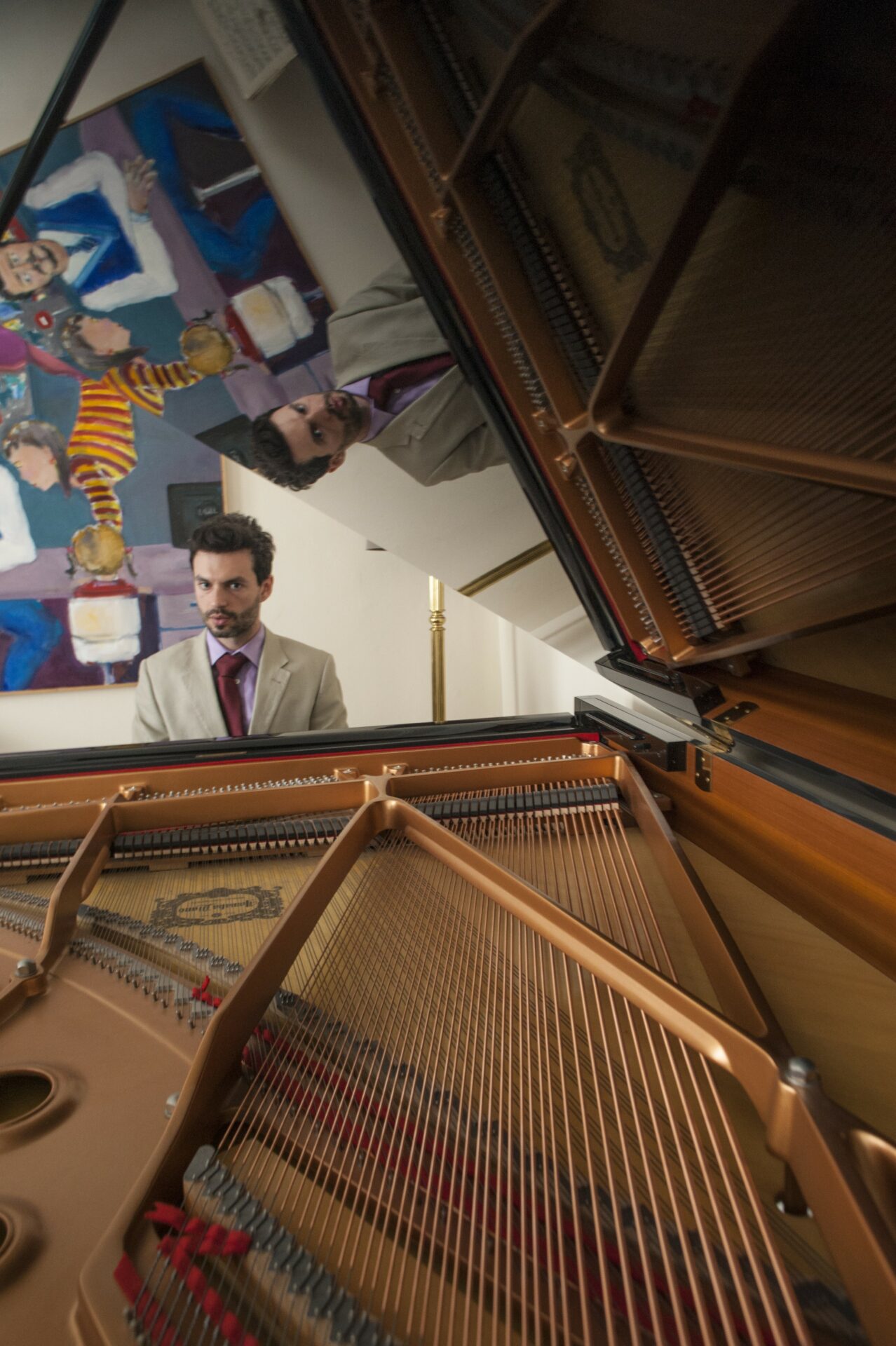“Escence of the pianistic execution” , according to Vicente Scaramuzza. Ch. 1 S. 3
The hand will be hold at all times so all the knuckles are set on an aligned frontal position in relation to the back end of the keys. If this position is achieved successfully then all the fingers with exception of the thumb will be able to perform using the fingertips as their contact surface with the leys.
Scarumuzza used o say: “the knuckle corresponding to the little finger should be prominent in a similar way the bone of the wrist is. We should spot two buttons, one coming out from the wrist and another one from the little finger’s knuckle”
The little finger’s knuckles will be set using the pronators and not the deltoid. In other words the elbow will not go farer from the body.
Even in the extreme case of the pronators not being able to help the hand positioning, we will avoid using the deltoid by moving our upper body. The sensation of using pronating will be kept at all times so the pull excerpt by the elbow against the fingers grip is constantly providing passive energy -weight- to the finger tips.
PRONATION: rotation of the hand and forearm so that the palm faces backwards or downwards. SUPINATION: rotation of the forearm and hand so that the palm faces forward or upwards.
———
NOTE:
The principles explained so far adjust to the majority of the cases though we might find cases in which the fingers are thicker than normal and then they can’t be accommodated in between the black keys. In such a case we will certainly allow the fingers to slide down gently so they can still play comfortably.
———-
The centre of the upper body (sternum) has to be located always in front the central E (E3). Doing the opposite would be the same as if a typewriter sat on a side of the typewriting machine. Another way of allocating the centre is to check the pedals.
Once we have acquired the right position the arm and forearm will gravitate directing their weight to the wrist which by this action is going to be led down. The fingers, with its knuckles heading up and by having to support the weight of the arms, will rise the wrist naturally. This position will be the natural one in which the hand situates itself on the instrument without moving neither to much to the front or backwards. The palm will remain connected to the forearm through the wrist in a relaxed but firm way. The height of the wrist will be derived from this natural interaction.



